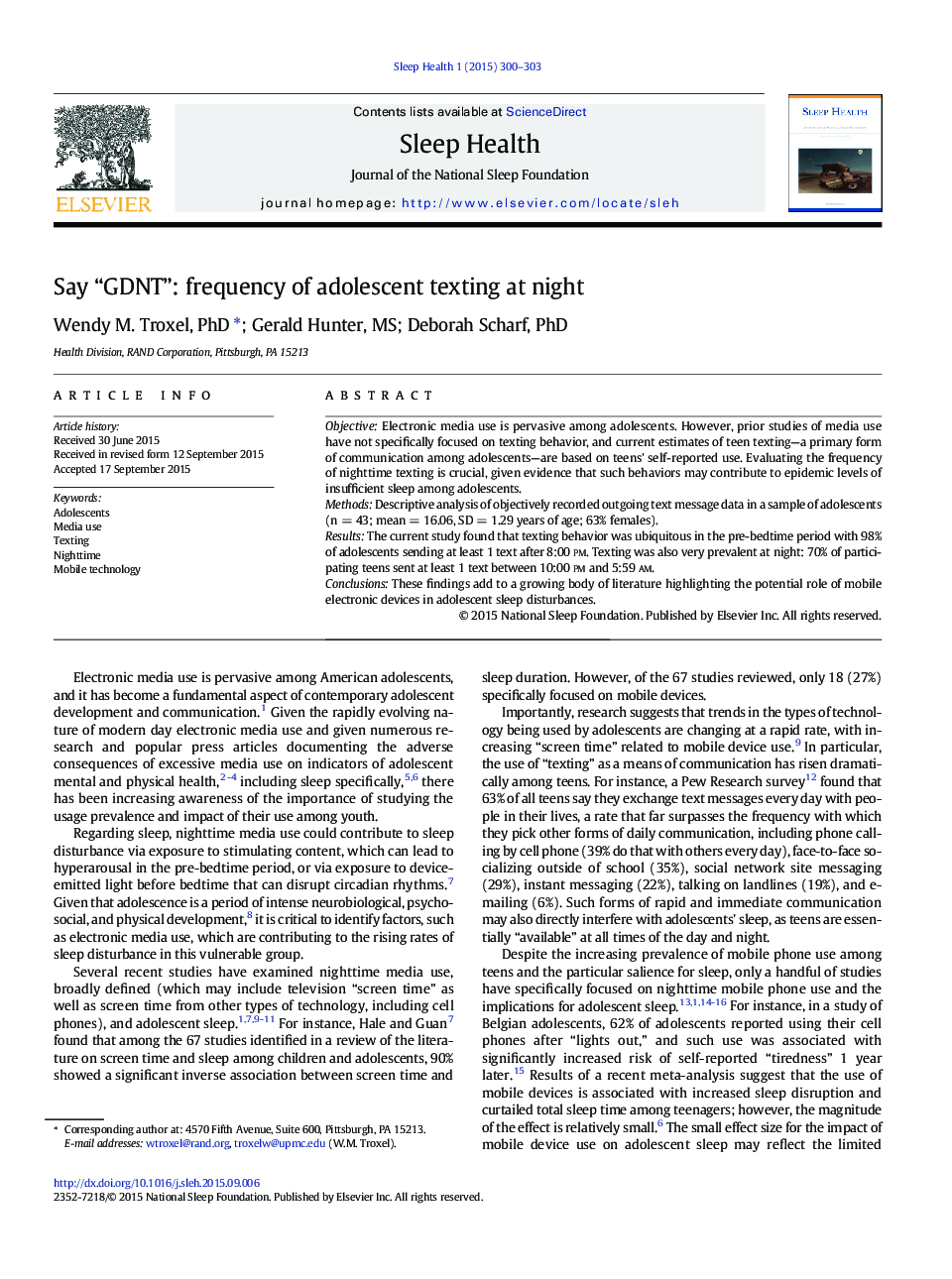| Article ID | Journal | Published Year | Pages | File Type |
|---|---|---|---|---|
| 916290 | Sleep Health | 2015 | 4 Pages |
ObjectiveElectronic media use is pervasive among adolescents. However, prior studies of media use have not specifically focused on texting behavior, and current estimates of teen texting—a primary form of communication among adolescents—are based on teens' self-reported use. Evaluating the frequency of nighttime texting is crucial, given evidence that such behaviors may contribute to epidemic levels of insufficient sleep among adolescents.MethodsDescriptive analysis of objectively recorded outgoing text message data in a sample of adolescents (n = 43; mean = 16.06, SD = 1.29 years of age; 63% females).ResultsThe current study found that texting behavior was ubiquitous in the pre-bedtime period with 98% of adolescents sending at least 1 text after 8:00 pm. Texting was also very prevalent at night: 70% of participating teens sent at least 1 text between 10:00 pm and 5:59 am.ConclusionsThese findings add to a growing body of literature highlighting the potential role of mobile electronic devices in adolescent sleep disturbances.
